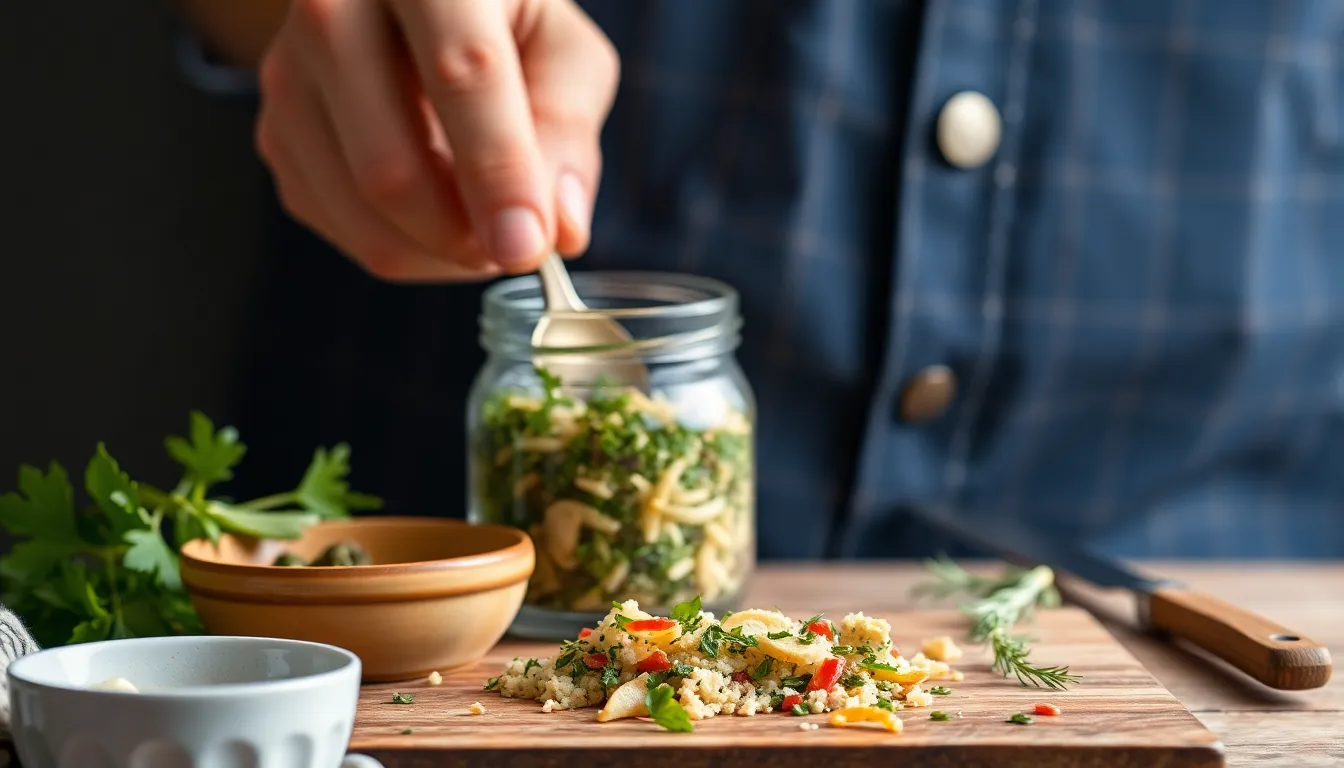Cooking with Herbs: 5 Mistakes You Might Be Making
Introduction
Herbs are often considered the unsung heroes of the culinary world. They possess the extraordinary ability to elevate a dish, transforming simple flavors into a complex symphony of taste. Beyond their flavor-enhancing properties, herbs are packed with health benefits, providing nutrients and antioxidants that can contribute to a healthier diet.
However, many home cooks fall into common pitfalls when using herbs in their cooking. From not understanding the difference between fresh and dried herbs to storing them improperly, these mistakes can hinder your culinary creations. In this article, we will explore five common mistakes you might be making when cooking with herbs and how to avoid them for a more flavorful and aromatic cooking experience.
Section 1: Mistake #1 – Using Dried Herbs Instead of Fresh
The first mistake many cooks make is opting for dried herbs when fresh herbs would significantly elevate their dishes. While dried herbs have their place, the flavor differences between fresh and dried cannot be overstated.
Fresh herbs offer a bright, vibrant flavor and aroma that can transform your meals, while dried herbs tend to have a more concentrated and earthy flavor. Here are some tips on when to use each type:
- Use fresh herbs in salads, garnishes, and light dishes.
- Opt for dried herbs in long-cooked recipes like soups, stews, and sauces.
Comparison of Common Herbs (Fresh vs. Dried)
| Herb | Fresh | Dried | Usage Tips |
|---|---|---|---|
| Basil | Bright, aromatic | Earthy, concentrated | Use fresh in salads, dried in sauces |
| Oregano | Floral, pungent | Robust, intense | Use dried in long-cooked dishes, fresh as a garnish |
| Parsley | Fresh, vibrant | Muted, less impactful | Use fresh for garnishing, dried in soups |
Section 2: Mistake #2 – Not Knowing When to Add Herbs
Another common mistake is not knowing when to add herbs during the cooking process. Timing can make a significant difference in how your dish turns out.
Herbs can generally be categorized into two types: cooking herbs and finishing herbs.
- Cooking Herbs: These should be added early in the cooking process, allowing their flavors to meld with other ingredients. Examples include rosemary, thyme, and bay leaves.
- Finishing Herbs: These should be added just before serving to preserve their fresh flavor and aroma. Examples include basil, cilantro, and parsley.
Understanding when to add herbs can greatly enhance your dishes. Consider experimenting with various timing to see what works best for your taste buds.
Section 3: Mistake #3 – Overusing or Underusing Herbs
Finding the right balance of herbs in your recipes is crucial. Overusing or underusing herbs can lead to unbalanced flavors that detract from your dish. So how do you achieve harmony?
The concept of herb ratios can guide you in determining how much to use. A simple guideline is:
- Fresh Herbs: Use three times the amount of fresh herbs compared to dried herbs.
- General Measurement: For a dish serving four to six people, start with 1-2 tablespoons of chopped fresh herbs or 1 teaspoon of dried herbs.
Experiment with these ratios and adjust according to your preferences. Remember, it’s always easier to add more herbs than to take them away!
Section 4: Mistake #4 – Storing Herbs Improperly
How you store your herbs can significantly affect their longevity and flavor. Many people make the mistake of wilting fresh herbs or letting dried herbs lose their potency due to improper storage.
Best Ways to Store Fresh Herbs:
- Keep them in the refrigerator wrapped in a damp paper towel.
- Place them upright in a jar with water, like a bouquet, and cover the leaves loosely with a plastic bag.
Best Ways to Store Dried Herbs:
- Store in airtight containers in a cool, dark place, away from light and humidity.
- Consider labeling containers with the date you purchased them; dried herbs typically lose potency after six months to a year.
By taking care of your herbs, you ensure maximum freshness and flavor in your cooking.
Section 5: Mistake #5 – Ignoring Herb Pairings
Lastly, many cooks overlook the power of herb pairings. Herbs can complement each other beautifully, enhancing the overall flavor of your dish.
Classic Herb Pairings:
- Basil and oregano
- Thyme and rosemary
- Cilantro and lime
- Parsley and dill
Don’t be afraid to experiment with unique combinations. Consider adding a hint of mint to your peas or mixing tarragon with chicken dishes for an unexpected twist!
Conclusion
Using herbs correctly in cooking can dramatically enhance the flavors of your dishes, making them more vibrant and enjoyable. By avoiding these common mistakes—using the right type of herbs, timing their addition, balancing their amounts, storing them properly, and exploring herb pairings—you can take your culinary skills to the next level.
We encourage you to experiment and learn from your experiences in the kitchen. Share your favorite herb tips, tricks, or questions in the comments below!
Call to Action
If you enjoyed this article and want more cooking tips, be sure to subscribe to our blog for regular updates. Don’t forget to share this article with your friends who love cooking!
Additional Resources
Check out our collection of recipes that highlight the use of herbs:




